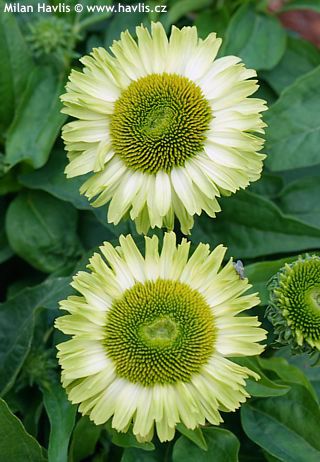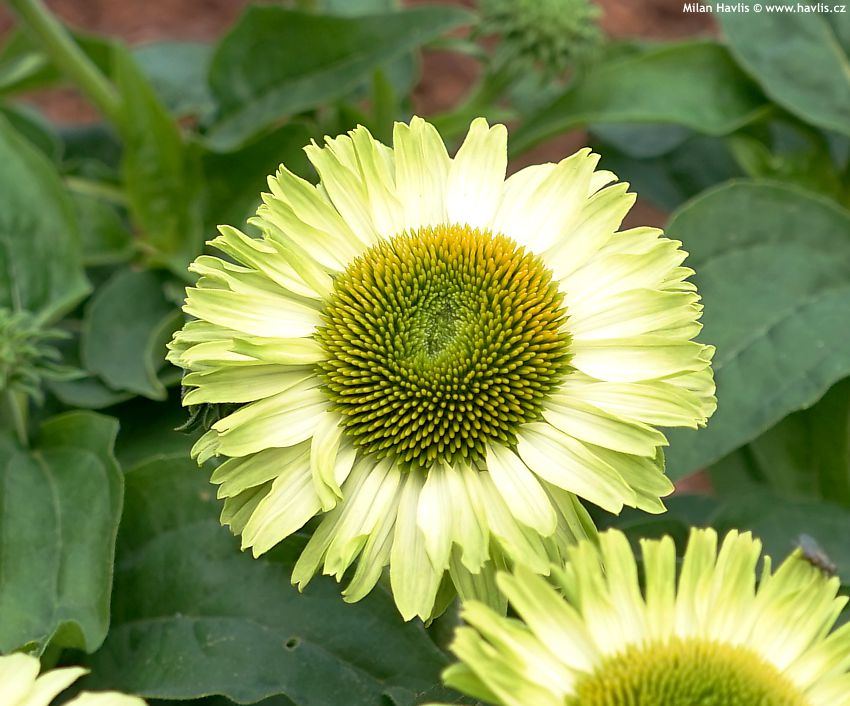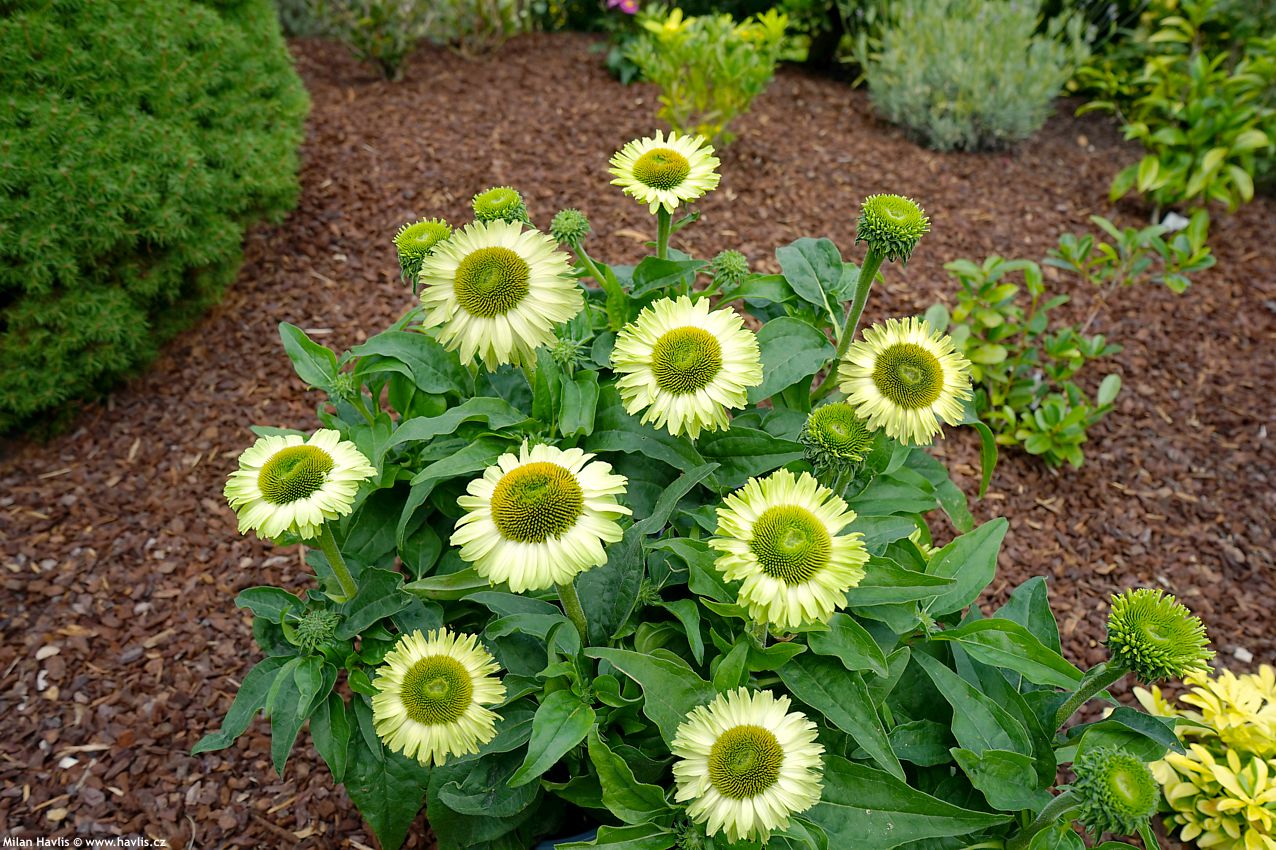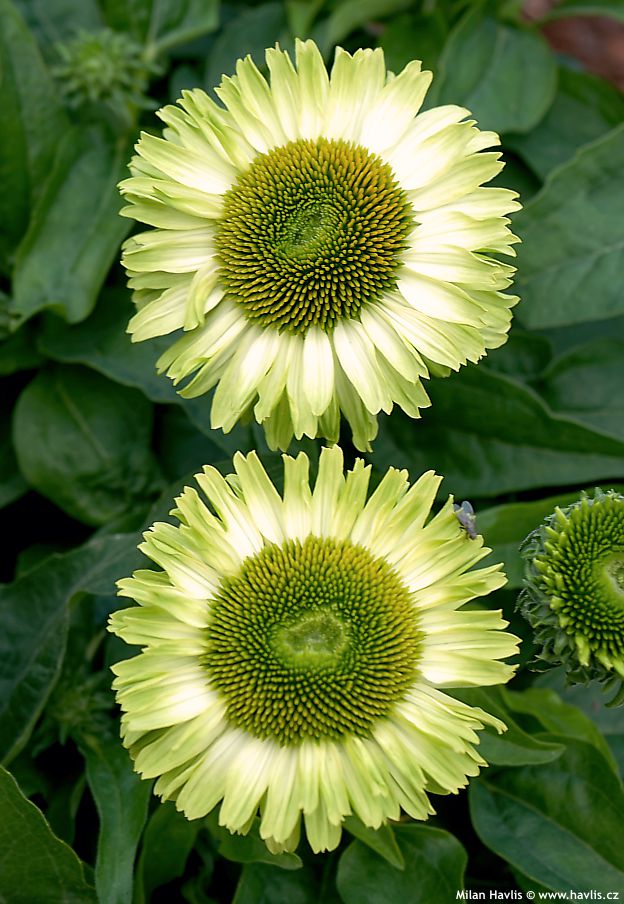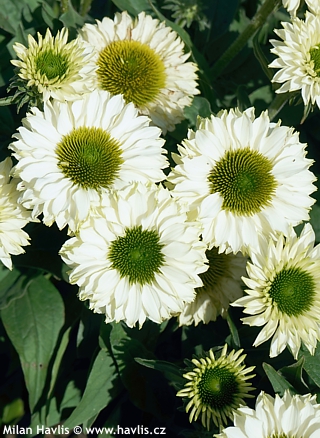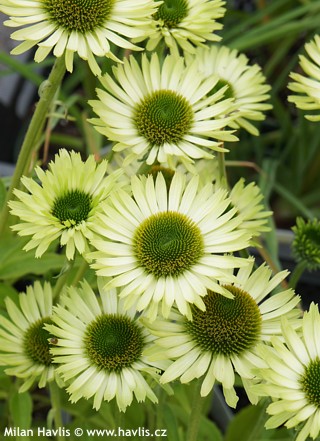Echinacea 'Ifecssag' SUNSEEKERS APPLE GREEN coneflower
Echinacea
The SunSeekers series of Echinacea offers a wide palette of this remarkable perennial, with all varieties boasting vigorous health, dense growth, and abundant flowering in saturated colors that don’t fade. The first part of the series, identified by patent designations beginning with "Apecss-", features cultivars with simple flowers in rich, dark shades. In contrast, the newer group — with names starting "Ifecss-" — represents a completely fresh direction, with varieties whose magnificent, often semi-double or exceptionally large flowers look strikingly unique: more like gerberas crossed with dahlias than traditional echinaceas.
These plants are bred by Innoflora B.V. of the Netherlands. Their journey to fame began in 2018, when the first cultivar, SUNSEEKERS SALMON, won the prestigious gold medal from KVBC at the Dutch novelty fair Plantarium and took the coneflower world by storm. The credit goes to breeder Jelle van den Haak, who created six standout cultivars in the series. Yet, cultivars appearing after 2020 carry a distinct handwriting and signature – that of Glenn Spil, another accomplished breeder. These newer varieties also have inventive, flavourful names that sound so tasty (yet inedible), such as Pumpkin Pie, Mineola, Watermelon, or simply Citrus 😊. Imaginative, right? All of these cultivars bear the label Plants for Pollinators invented by the RHS (Royal Horticultural Society), thanks to their rich nectar that supports bees, butterflies, and other pollinators.
Unique and gorgeous. This is another coneflower variety from the SunSeekers series. It is called SUNSEEKERS APPLE GREEN and produces large, 8-10 cm across, single flowers with 2 or even 3 layers of daisy-like, light to medium green ray florets. The discs are massive, flattened, and hide plenty of nectar for butterflies, bumble bees as well as bees. Blooming begins in late July or early August and lasts until the last sunny and warm days of autumn. Longevity of individual flowers is 2-3 weeks. Plants are compact and exhibit dense habit. Stems are usually about 50 cm tall. Deadhead spent flowers regularly and feed the plants every two weeks during summer. Leaves are healthy, deep green, and broadly lanceolate. The variety is protected by EU patent No. 63997 from 2023.
The plant is usually trouble-free and resistant, just be careful if slugs are present in your garden. Since coneflowers emerge quite late, often when slugs are already in their lethal strength, they could gobble up newly emerging foliage totally and thus destroy the plant before it even comes out.
Coneflower will tolerate almost any soil type but boggy. It loves full sun. It is suitable for mixed borders with perennials or can be used as a flowering feature among low shrubs and conifers, and looks lovely when planted in a mass in a container on patios and balconies. Pay special attention to planting especially these hybrid coneflowers – make sure the soil is fertile, free-draining but keep it evenly moist before the plant establishes. No extra watering is usually needed from the second year. Fully hardy to about -34°C (USDA zone 4).
Last update 16-08-2022; 30-08-2023

































